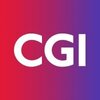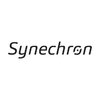Filter interviews by
Talentelgia Software Intern Interview Questions, Process, and Tips
Talentelgia Software Intern Interview Experiences
1 interview found
I applied via Referral and was interviewed in Feb 2022. There was 1 interview round.
(5 Questions)
- Q1. Difference between jdk jre jvm
- Ans.
JDK is a development kit, JRE is a runtime environment, and JVM is a virtual machine that executes Java code.
JDK includes JRE and development tools like javac and java
JRE includes JVM and necessary libraries to run Java applications
JVM is responsible for interpreting Java bytecode and executing it
Different versions of JDK, JRE, and JVM may be installed on the same machine
JDK is used for developing Java applications, JR
- Q2. Html and css difference
- Ans.
HTML is a markup language used to create content, while CSS is used to style and layout that content.
HTML stands for Hypertext Markup Language and is used to create the structure of a webpage.
CSS stands for Cascading Style Sheets and is used to style and layout the content created with HTML.
HTML is used to define the content of a webpage, such as text, images, and videos.
CSS is used to define the presentation of a webp...
- Q3. What do you mean by API
- Ans.
API stands for Application Programming Interface. It is a set of protocols, routines, and tools for building software applications.
API allows different software applications to communicate with each other
It defines how software components should interact
APIs can be public or private
Examples of APIs include Google Maps API, Twitter API, and Facebook API
- Q4. Normalization explains
- Ans.
Normalization is the process of organizing data in a database to reduce redundancy and improve data integrity.
Normalization involves breaking down a database into smaller, more manageable tables
Each table should have a primary key and only contain data that is related to that key
Normalization helps to prevent data inconsistencies and anomalies
There are different levels of normalization, with each level building on the ...
- Q5. Framework Knowledge in java
Interview Preparation Tips
Give answers if you know otherwise say direct no.
Be sure if you are right then don't panic
Skills evaluated in this interview
Top trending discussions






Interview questions from similar companies

I applied via Naukri.com and was interviewed in Nov 2024. There was 1 interview round.
(16 Questions)
- Q1. What are custom hooks in React, and what are their use cases? Additionally, can you provide an example of a custom hook that performs an API call and utilizes the retrieved data?
- Ans.
Custom hooks in React are reusable functions that allow you to extract component logic into separate functions for better code organization and reusability.
Custom hooks are created using the 'use' prefix and can be used to share logic between components.
Use cases for custom hooks include fetching data from an API, handling form state, managing local storage, and more.
Example of a custom hook for API call: const useFetc...
- Q2. What is the difference between useMemo and useCallback in React?
- Ans.
useMemo is used to memoize a value, while useCallback is used to memoize a function.
useMemo is used to memoize a value and recompute it only when its dependencies change.
useCallback is used to memoize a callback function and prevent unnecessary re-renders.
Example: useMemo can be used to memoize the result of a complex computation, while useCallback can be used to memoize an event handler function.
- Q3. What is the difference between class-based components and functional components in React?
- Ans.
Class-based components use ES6 classes and have lifecycle methods, while functional components are simpler and use functions.
Class-based components use ES6 classes to create components, while functional components are created using functions.
Class-based components have lifecycle methods like componentDidMount and componentDidUpdate, while functional components do not.
Functional components are simpler and more lightweig...
- Q4. How can you implement the lifecycle of a React component in a functional component?
- Ans.
Implementing the lifecycle of a React component in a functional component
Use the useEffect hook to replicate lifecycle methods like componentDidMount, componentDidUpdate, and componentWillUnmount
Pass an empty array as the second argument to useEffect to mimic componentDidMount
Pass a variable or state as the second argument to useEffect to mimic componentDidUpdate
Return a cleanup function inside useEffect to mimic compo
- Q5. What are the various state management techniques available in React?
- Ans.
Various state management techniques in React include Context API, Redux, and local state.
Context API: React's built-in solution for passing data through the component tree without having to pass props down manually at every level.
Redux: A popular state management library for React applications, allowing for a centralized store to manage application state.
Local state: Managing state within individual components using us
- Q6. What is the architecture of Redux, and what purposes do middlewares serve within it?
- Ans.
Redux is a predictable state container for JavaScript apps. Middlewares are functions that intercept actions before they reach the reducer.
Redux follows a unidirectional data flow architecture.
Middlewares in Redux are functions that can intercept, modify, or dispatch actions.
Common use cases for middlewares include logging, asynchronous API calls, and handling side effects.
Examples of popular Redux middlewares are Redu...
- Q7. What is hoisting in JavaScript?
- Ans.
Hoisting in JavaScript is the behavior where variable and function declarations are moved to the top of their containing scope during the compilation phase.
Variable declarations are hoisted to the top of their scope, but not their initializations.
Function declarations are fully hoisted, meaning they can be called before they are declared.
Hoisting can lead to unexpected behavior if not understood properly.
- Q8. What is event bubbling in JavaScript?
- Ans.
Event bubbling is the propagation of events from the target element up through its ancestors in the DOM tree.
Events triggered on a child element will 'bubble up' and trigger on parent elements.
Event listeners can be attached to parent elements to handle events from multiple child elements.
Stopping event propagation can be done using event.stopPropagation() or event.stopImmediatePropagation().
- Q9. What are block scope and function scope in JavaScript?
- Ans.
Block scope and function scope are two types of scopes in JavaScript that determine the visibility and accessibility of variables.
Block scope refers to the visibility of variables within a block of code enclosed by curly braces. Variables declared with 'let' and 'const' have block scope.
Function scope refers to the visibility of variables within a function. Variables declared with 'var' have function scope.
Variables de...
- Q10. Have you had experience working with semantic tags in HTML?
- Ans.
Yes, I have experience working with semantic tags in HTML.
Used semantic tags like <header>, <nav>, <main>, <section>, <article>, <aside>, <footer> for better structure and SEO.
Understand the importance of using semantic tags for accessibility and search engine optimization.
Semantic tags help in organizing content and making it more readable for developers and browsers.
- Q11. What are the various methods for creating an object in JavaScript?
- Ans.
Various methods for creating an object in JavaScript include object literals, constructor functions, ES6 classes, and Object.create() method.
Object literals: var obj = { key: value };
Constructor functions: function ObjectName() { this.key = value; } var obj = new ObjectName();
ES6 classes: class ClassName { constructor() { this.key = value; } } var obj = new ClassName();
Object.create() method: var obj = Object.create(pr
- Q12. What are the differences between shallow copy and deep copy in JavaScript?
- Ans.
Shallow copy only copies the references of nested objects, while deep copy creates new copies of nested objects.
Shallow copy creates a new object but does not create copies of nested objects, only copies their references.
Deep copy creates a new object and also creates new copies of all nested objects.
Shallow copy can be achieved using Object.assign() or spread operator, while deep copy can be achieved using JSON.parse(
- Q13. What will be the output of the following JavaScript code fragment: `const a; function test() { console.log(a); }; test();`?
- Ans.
The code will throw an error because 'a' is declared but not initialized.
The code will result in a ReferenceError because 'a' is declared but not assigned a value.
Variables declared with 'const' must be initialized at the time of declaration.
Initializing 'a' with a value before calling test() will prevent the error.
- Q14. How can you use CSS to arrange elements in a row and column layout?
- Ans.
CSS can be used to arrange elements in a row and column layout using flexbox or grid layout properties.
Use display: flex; for a row layout and display: flex; flex-direction: column; for a column layout
Use justify-content and align-items properties to align items in the main axis and cross axis respectively
For grid layout, use display: grid; and grid-template-columns or grid-template-rows to define the layout
- Q15. Have you utilized CSS preprocessors, and if so, which ones?
- Ans.
Yes, I have utilized CSS preprocessors such as SASS and LESS.
I have experience using SASS to streamline my CSS workflow by utilizing variables, mixins, and nesting.
I have also worked with LESS to improve code organization and maintainability through features like variables and functions.
- Q16. If I have assigned different colors to an ID and a class and applied both to the same element, which color will be applied based on CSS specificity precedence?
- Ans.
The color applied will be based on the specificity of the selector, with ID having higher specificity than class.
ID has higher specificity than class in CSS
Color applied will be based on the selector with higher specificity
Example: If ID selector has color red and class selector has color blue, the color applied will be red
Interview Preparation Tips
- Javascript
- React.Js
- HTML
- CSS
Skills evaluated in this interview

I applied via campus placement at J S S Academy of Technical Education, Bangalore and was interviewed in Dec 2024. There were 3 interview rounds.
Average to easy difficulty level.
(3 Questions)
- Q1. Java code of string manipulation
- Q2. What is the Java code for various types of sorting algorithms?
- Q3. Sql query and topics related to joins.
(4 Questions)
- Q1. About yourself and family
- Q2. What do you know about the company?
- Q3. Can you provide examples of real-life scenarios where you handled conflicts with either a colleague or a manager?
- Q4. What actions would you take if your manager does not approve your product idea, and how would you attempt to persuade them?
Interview Preparation Tips

Senior Software Engineer Interview Questions & Answers
Virtusa Consulting Servicesposted on 31 Jan 2025
I was interviewed in Dec 2024.
Basics of Sql Queries and Explain the Queries
(3 Questions)
- Q1. SCD types of in ETL
- Q2. SQL Queries with some scenario based
- Q3. What is mean by index

Associate Software Engineer Interview Questions & Answers
Bosch Global Software Technologiesposted on 15 Jan 2025
I applied via Referral and was interviewed in Dec 2024. There were 3 interview rounds.
Topics on electronics and C programming
(4 Questions)
- Q1. Questions on simple python programs and electronics basics
- Q2. Question on simple linked list
- Q3. Program for fibonacci seq
- Ans.
Program to generate Fibonacci sequence
Start with two initial numbers, 0 and 1
Add the previous two numbers to get the next number in the sequence
Repeat this process to generate the Fibonacci sequence
Example: 0, 1, 1, 2, 3, 5, 8, 13, ...
- Q4. Questions on mosfets
(1 Question)
- Q1. Why you would like to join the company, and other questions
Interview Preparation Tips

(2 Questions)
- Q1. What is the internal working of a hashmap?
- Q2. Design a Least Recently Used (LRU) cache.
(2 Questions)
- Q1. What are the SOLID principles in software engineering?
- Q2. What design patterns have you worked with?

I applied via campus placement at Lovely Professional University (LPU) and was interviewed in Oct 2024. There were 3 interview rounds.
It contain 40 question which is very easy
It contain 3 coding question
(5 Questions)
- Q1. Introduction About Your Self and About Project
- Q2. Two dsa question of leetcode
- Q3. Basics Concept on dsa
- Q4. From which platform you do coding
- Q5. Simple Simple Question
Interview Preparation Tips
- DSA

Software Trainee Interview Questions & Answers
Hewlett Packard Enterpriseposted on 24 Dec 2024
It was kind of difficult the coding part
They asked basic on going topic like impact of AI
(3 Questions)
- Q1. Very much complex questions on cloud, oops, python and networks
- Q2. What is diffrent between linear and logestic regression
- Ans.
Linear regression is used for predicting continuous values, while logistic regression is used for predicting binary outcomes.
Linear regression is used when the dependent variable is continuous and has a linear relationship with the independent variable.
Logistic regression is used when the dependent variable is binary or categorical and the relationship between the independent variables and the outcome is non-linear.
Lin...
- Q3. Certain questions on cloud
Interview Preparation Tips

I applied via Campus Placement and was interviewed in Oct 2024. There were 5 interview rounds.
Basic aptitudes question in online test
Two coding Q online test
(2 Questions)
- Q1. Resume bsic Q asked
- Q2. Oops question basic theory
(2 Questions)
- Q1. One coding question asked to solve on paper of arrays
- Q2. Basic questions from resume
(2 Questions)
- Q1. Relocating related questions
- Q2. Why u want to join global logic
- Ans.
I want to join Global Logic because of their reputation for cutting-edge technology solutions and collaborative work environment.
Global Logic is known for their innovative technology solutions
I am impressed by the collaborative work environment at Global Logic
I believe Global Logic offers great opportunities for professional growth and development
Interview Preparation Tips

(2 Questions)
- Q1. Regarding all basic java , sprint boot questions
- Q2. More focused on Spring and microservices
(1 Question)
- Q1. Advance java questions
Talentelgia Interview FAQs
Tell us how to improve this page.
Interview Questions for Popular Designations
- Software Engineer Interview Questions
- Senior Software Engineer Interview Questions
- Associate Software Engineer Interview Questions
- Software Developer Intern Interview Questions
- Softwaretest Engineer Interview Questions
- Software Engineer Intern Interview Questions
- Software Engineer Trainee Interview Questions
- Software Development Engineer Interview Questions
- Show more
Interview Questions from Similar Companies
|
Software Engineer
24
salaries
| ₹3.2 L/yr - ₹9 L/yr |
|
Senior Software Engineer
11
salaries
| ₹4.6 L/yr - ₹8.6 L/yr |
|
Software Developer
4
salaries
| ₹2.4 L/yr - ₹5.4 L/yr |
|
UI/UX Designer
4
salaries
| ₹3.7 L/yr - ₹4.3 L/yr |
|
Junior Software Engineer
4
salaries
| ₹3 L/yr - ₹4 L/yr |

Infosys

TCS

Wipro

HCLTech
- Home >
- Interviews >
- Talentelgia Interview Questions >
- Talentelgia Software Intern Interview Questions











